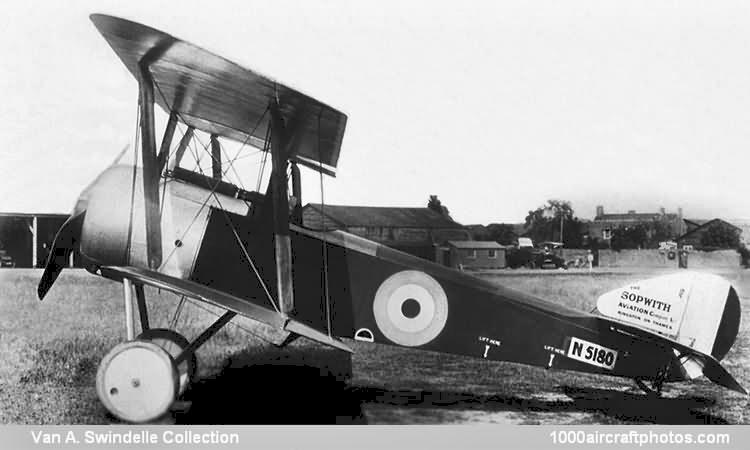07/31/2011. Remarks by Johan Visschedijk: "Possessing an obvious resemblance to the 1½-Strutter, the Pup – again an unofficial appellation which was to become inseparable from the aircraft to which it was affectionately applied – flew in the early spring of 1916 as the Sopwith Scout. A conventional single-bay equi-span staggered biplane primarily of wooden construction with fabric skinning, the Pup had a single 0.303 in (7.7 mm) synchronized machine gun, and all six prototypes and the initial eleven Beardmore-built aircraft had the 80 hp Clerget nine-cylinder rotary engine.
Subsequently, the 80 hp Le Rhône rotary was standardized. The Pup was ordered by the Admiralty from Sopwith and Beardmore, and by the War Office from Standard Motor and Whitehead Aircraft, the first production examples appearing in September 1916. Obsolescent as a frontline fighter by the late summer of 1917 - although production continued in 1918, 733 being delivered in that year to bring the grand total to 1,770 - the Pup was assigned to Home Defence units.
To improve combat capability against the Gotha bombers then attacking the UK, the Pup was fitted with a 100 hp Gnome Monosoupape, the installation being characterized by a horseshoe-shaped cowling. Many RNAS Pups were armed with a 0.303 in (7.7 mm) gun on a tripod mount in front of the cockpit and some 20 were equipped to carry eight Le Prieur rockets, four each on the interplane struts. Early in 1917, the Pup came into use as a shipboard fighter and was used on the carriers Campania, Furious and Manxman.
The aircraft shown on top of the page was one of 171 Pups ordered under the Naval 'N' serial series: N5180 to N5199, N6160 to N6209, N6430 to N6459, and N6460 to N6529 (50 were not produced, N6480 to N6529). The fate of the aircraft is unknown.
Another Sopwith Pup (formerly a two-seat Sopwith Dove) wore the same livery and markings, read the remarks on page 6945."
